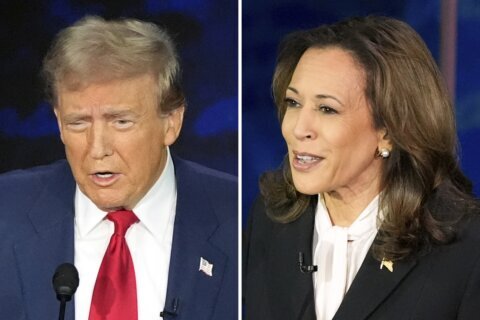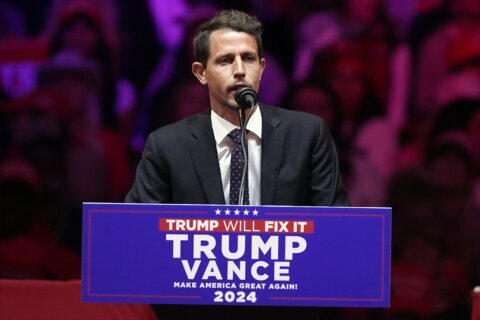For workers, a standard 401(k) plan offers a straightforward and tax-advantaged way to save for retirement, but for employers, setting up a 401(k) plan is anything but simple. Companies that want to offer 401(k) savings plans to their employees must ensure they don’t run afoul of complicated government rules.
A key regulation for most 401(k) plans is the requirement for annual nondiscrimination tests that are designed to prove a plan doesn’t unfairly favor certain employees. “If the employer fails (the tests), it’s very punitive,” says Steven Azoury, owner of advisory firm Azoury Financial in Troy, Michigan.
It could mean a business will be required to refund contributions to highly compensated or key employees. Or in a worst-case scenario, the whole plan could be disallowed going forward, according to Azoury.
[Read: What to Do If You Lose Money in Your 401(k).]
However, there is a way to avoid the expense and hassle of nondiscrimination tests. By setting up a safe harbor 401(k), a business can provide its employees with the same tax benefits as a regular 401(k) plan but skip the onerous annual testing requirements.
Read on to learn more about safe harbor 401(k) rules, including how they’re set up, how they meet government requirements and ways to benefit from employer-matched contributions.
What Is a Safe Harbor 401(k)?
Before you learn the basics of safe harbor plans and how they’re structured, you must understand the government nondiscrimination testing for regular 401(k) accounts.
“It’s the government verifying that the 401(k) is to the benefit of everyone,” says Dan Beck, CEO of 401GO, a 401(k) platform that specializes in helping small businesses establish their retirement plans.
The nondiscrimination tests analyze the savings rates of highly compensated employees compared to non-highly compensated employees. For 2023, a highly compensated employee is categorized as a worker earning more than $135,000 annually in the preceding year or someone who owned more than a 5% interest in the business during the previous year. In 2024, the income threshold for highly compensated employees will be increased to $150,000 and be based on earnings from 2023.
Under these tests, there can’t be a large discrepancy between the groups in terms of what they are depositing into their 401(k) accounts. For instance, with the actual deferral percentage test, or ADP test, if non-highly compensated employees are only putting an average of 4% of their income into their retirement plan, highly compensated employees may be limited to depositing 6% of their income.
The government-required tests also aim to assess whether the account contributions are top-heavy. To do that, the tests compare the fund assets of key employees to those of everyone else. A key employee is defined as an owner or officer of a business. If key employees own more than 60% of the assets in a plan, it is considered top-heavy and corrective action may be required.
“Failed tests usually either require an employer contribution to the non-highly compensated employees or a refund of contributions from the highly compensated employees,” says Don Recker, partner and director of corporate retirement plans at Creative Planning, a comprehensive wealth management firm based in Overland Park, Kansas.
[READ: How to Save $1 Million by Retirement]
How a Safe Harbor 401(k) Sidesteps an IRS Nondiscrimination Test
With a regular 401(k), a company must pass the nondiscrimination testing every year, but plans that follow the safe harbor framework are assured of fulfilling government requirements. What’s more, highly compensated owners don’t have to worry about their contributions being capped by ADP testing.
“It’s a huge benefit from an employee perspective,” says Edward Gottfried, director of product management at Betterment for Business, which offers a digital platform for 401(k) administration.
With a safe harbor 401(k) plan, everyone can contribute up to the $22,500 maximum in 2023, and those age 50 and older can make an additional $7,500 in catch-up contributions.
The trade-off is the company has to make mandatory contributions to employee 401(k) accounts, and that money becomes vested immediately. For a large company, that could be an expensive proposition, but a small business may find it is more cost-effective to make retirement contributions than deal with burdensome nondiscrimination testing. Safe harbor 401(k) plans are also typically less expensive to set up than traditional plans.
Types of Safe Harbor 401(k) Plans
Safe harbor 401(k) plans can be set up with or without a match. The following are the available 401(k) safe harbor match and contribution options:
— Basic safe harbor:Also known as an elective safe harbor, this plan will match 100% of contributions up to 3% of an employee’s compensation and then 50% of an employee’s additional contributions, up to 5% of pay.
— Nonelective safe harbor:With these plans, employers make a 3% retirement contribution for all workers, regardless of whether they choose to participate in the plan. “This design can allow for … additional benefits to business owners and identified employees who the business owner wants to receive added benefits,” Recker says.
— Enhanced safe harbor:As another type of elective plan, enhanced safe harbor 401(k) plans meet or exceed what is offered in a basic plan. Typically, they provide a 100% match of up to 4% of an employee’s compensation.
— QACA safe harbor: Standing for qualified automatic contribution arrangement, QACA plans feature automatic enrollment that puts aside 3% of a worker’s compensation in the 401(k) plan unless they opt out. There is also a requirement for an auto-increase of 1% per year that, at the discretion of the employer, can continue to a maximum of 15%. Employers usually match 100% of the first 1% of contributions and 50% of deferrals between 1% to 6% of compensation.
“These types of plans are commonly offered by small businesses that otherwise would have difficulty passing the annual nondiscrimination testing, but is also fairly common with large businesses that want to take advantage of the safe harbor testing exemption,” Recker says.
Employee Advantages of a Safe Harbor 401(k)
A safe harbor 401(k) offers significant benefits to workers, including automatic employer contributions to their retirement fund and potential tax deductions.
“Having a match is really enticing for employees,” Gottfried says. It can help businesses attract and retain top talent in a tight labor market.
Another advantage for workers is that employer contributions to safe harbor 401(k) plans are immediately vested. With a standard 401(k), an employee may have to work a certain number of years before they have full access to this money, but no such lengthy predetermined vesting schedule is in place with most safe harbor plans.
That means money deposited into a safe harbor 401(k) plan is an employee’s to keep, no matter what.
On the employer side, having a safe harbor 401(k) could mean increased payroll costs, but it could also mean lower administrative costs. “The administrative hassle it saves is incredible,” Azoury says.
[READ: How to Pay Less Tax on Retirement Account Withdrawals.]
How to Start a Safe Harbor 401(k)
Employers who want to open a safe harbor 401(k) plan should seek professional guidance. Some companies, such as 401GO, specialize in working with small businesses that may benefit from safe harbor plans.
Accounting firms and payroll providers have traditionally served as plan administrators, but online solutions are gaining popularity. Another option is to get assistance from an advisory firm that can determine how a retirement plan fits into the big picture of company finances and goals.
Regardless of whether an accountant, financial advisor or another professional helps set up the plan, its official documentation must indicate it’s a safe harbor 401(k).
Even if companies don’t think they need a safe harbor 401(k) now, Beck says it’s something for business owners to consider as some states weigh legislation to regulate retirement plans.
Not only do these savings accounts make it easier for company executives to meet government rules, they ensure workers receive minimum contributions toward their retirement, making it a win-win for employers and employees.
More from U.S. News
Are 401(k)s Protected in a Bank Collapse?
Is My Money Safe? What You Need to Know About Bank Failures
How to Adjust Your Retirement Portfolio Against a 2023 Recession
What You Need to Know About a Safe Harbor 401(k) originally appeared on usnews.com
Update 08/09/23: This story was published at an earlier date and has been updated with new information.







